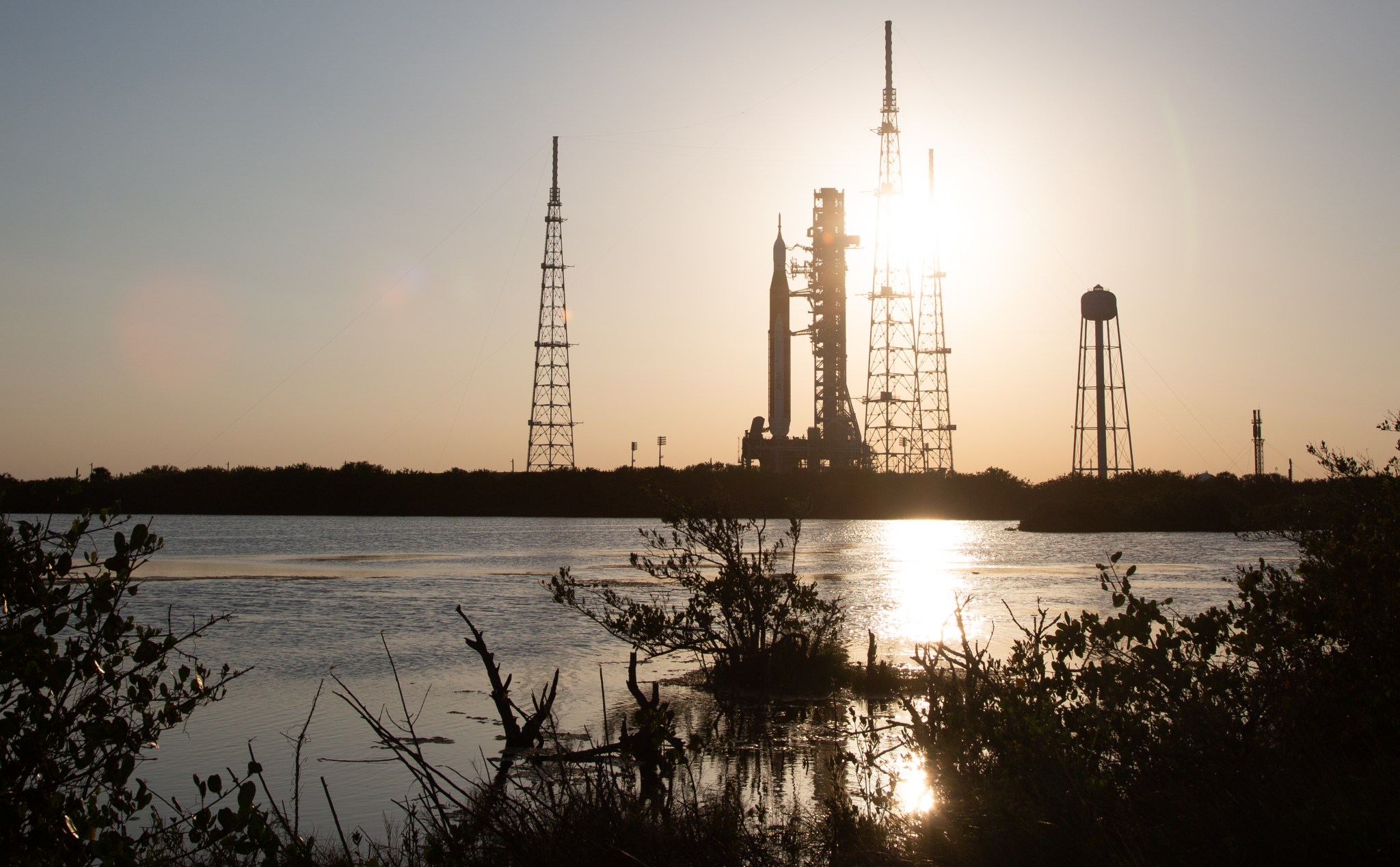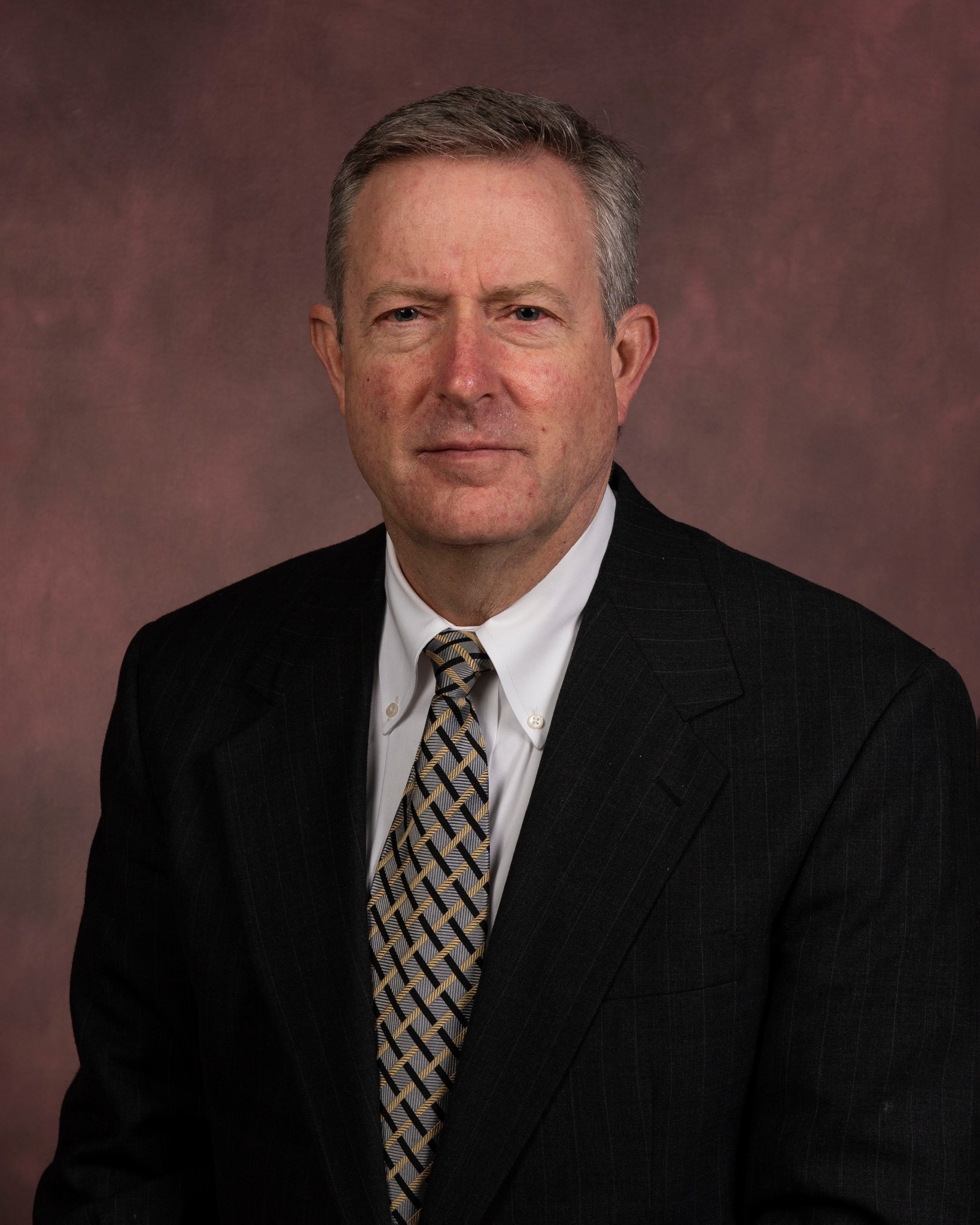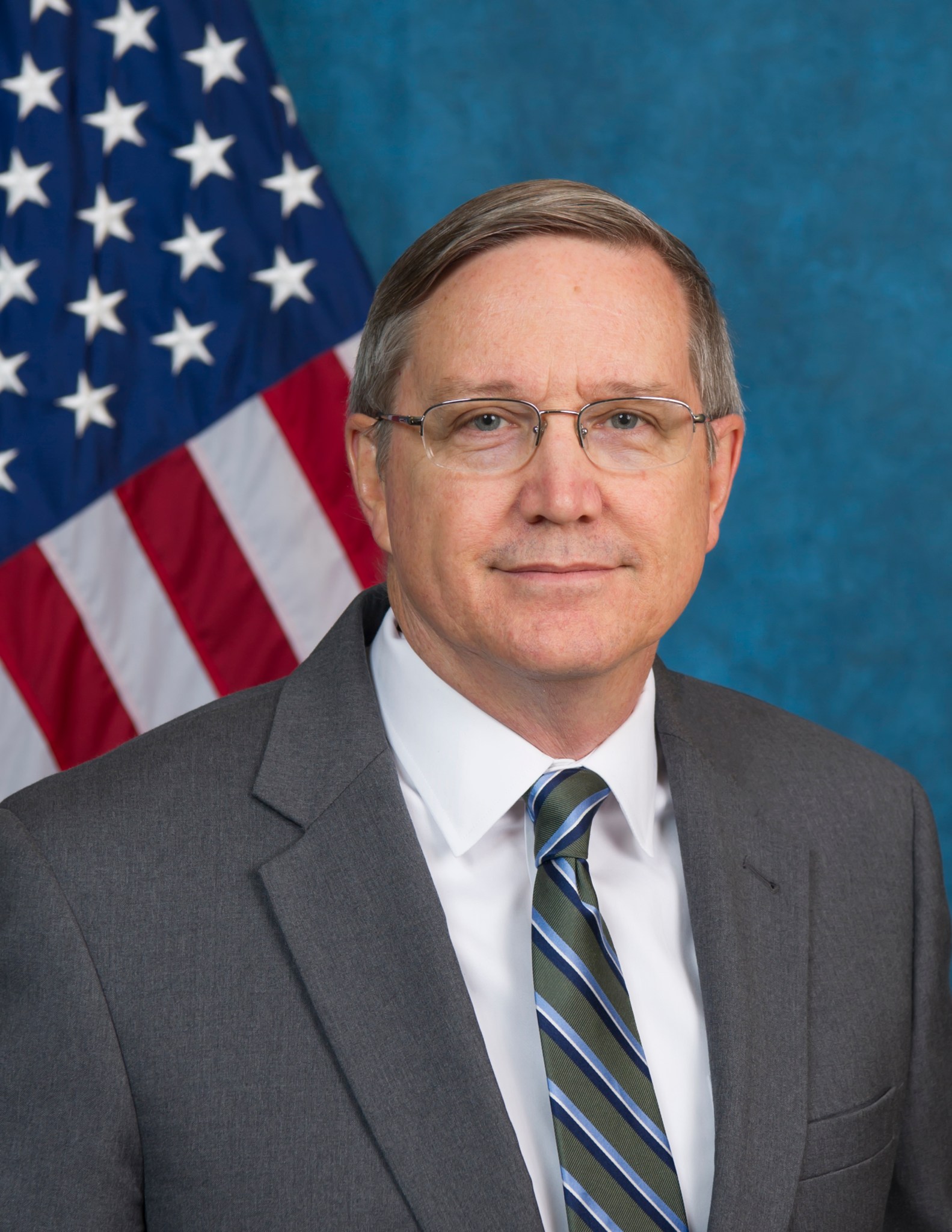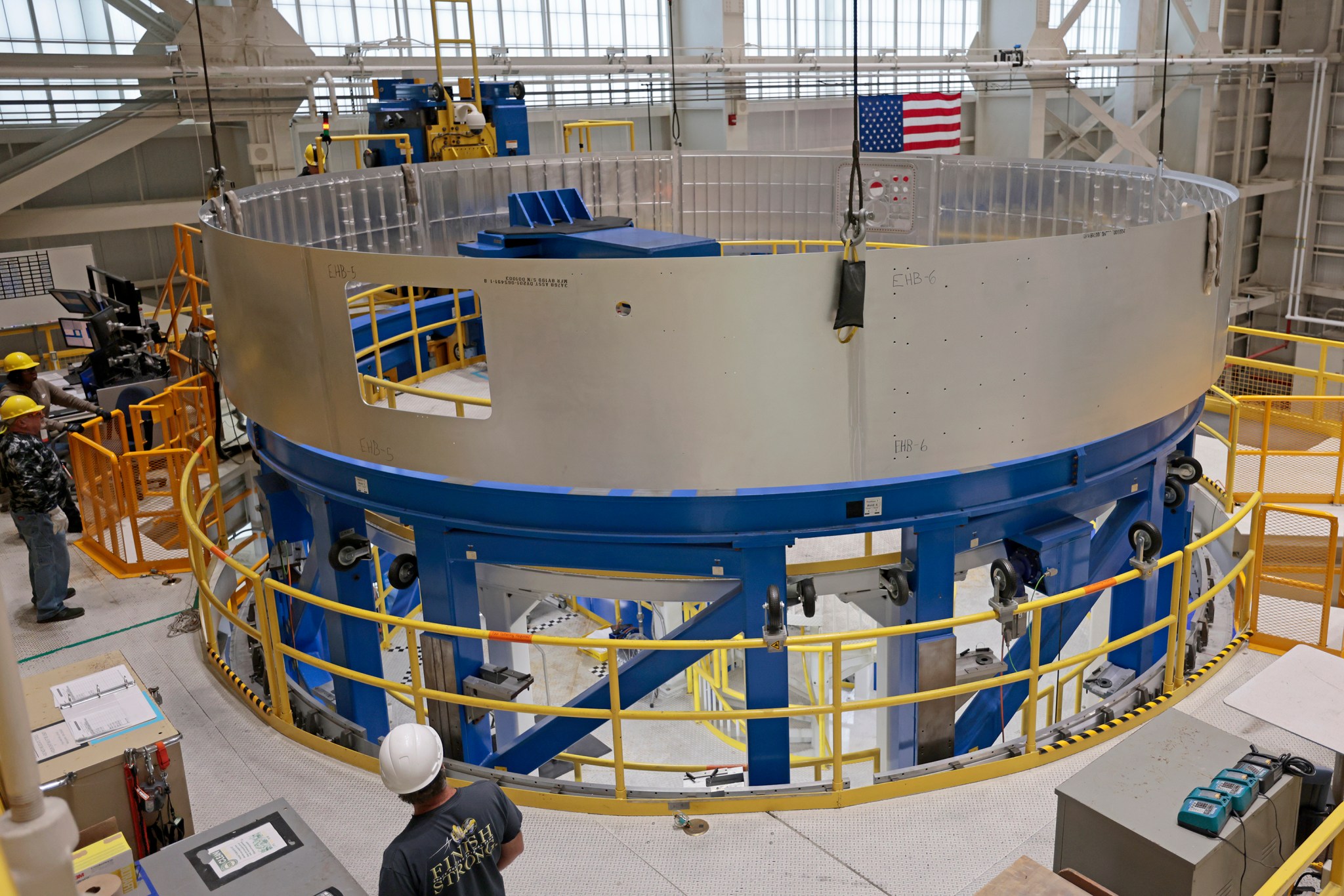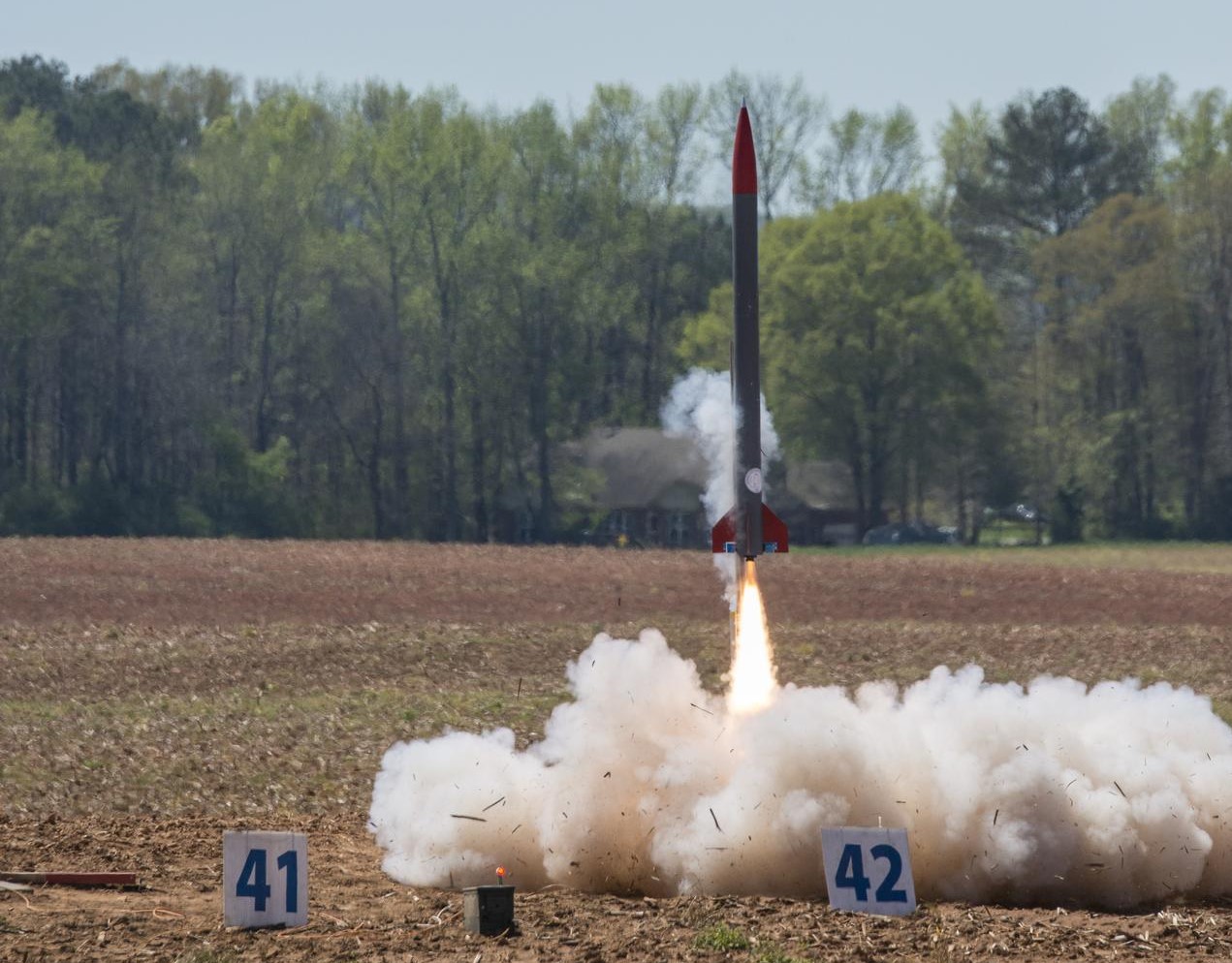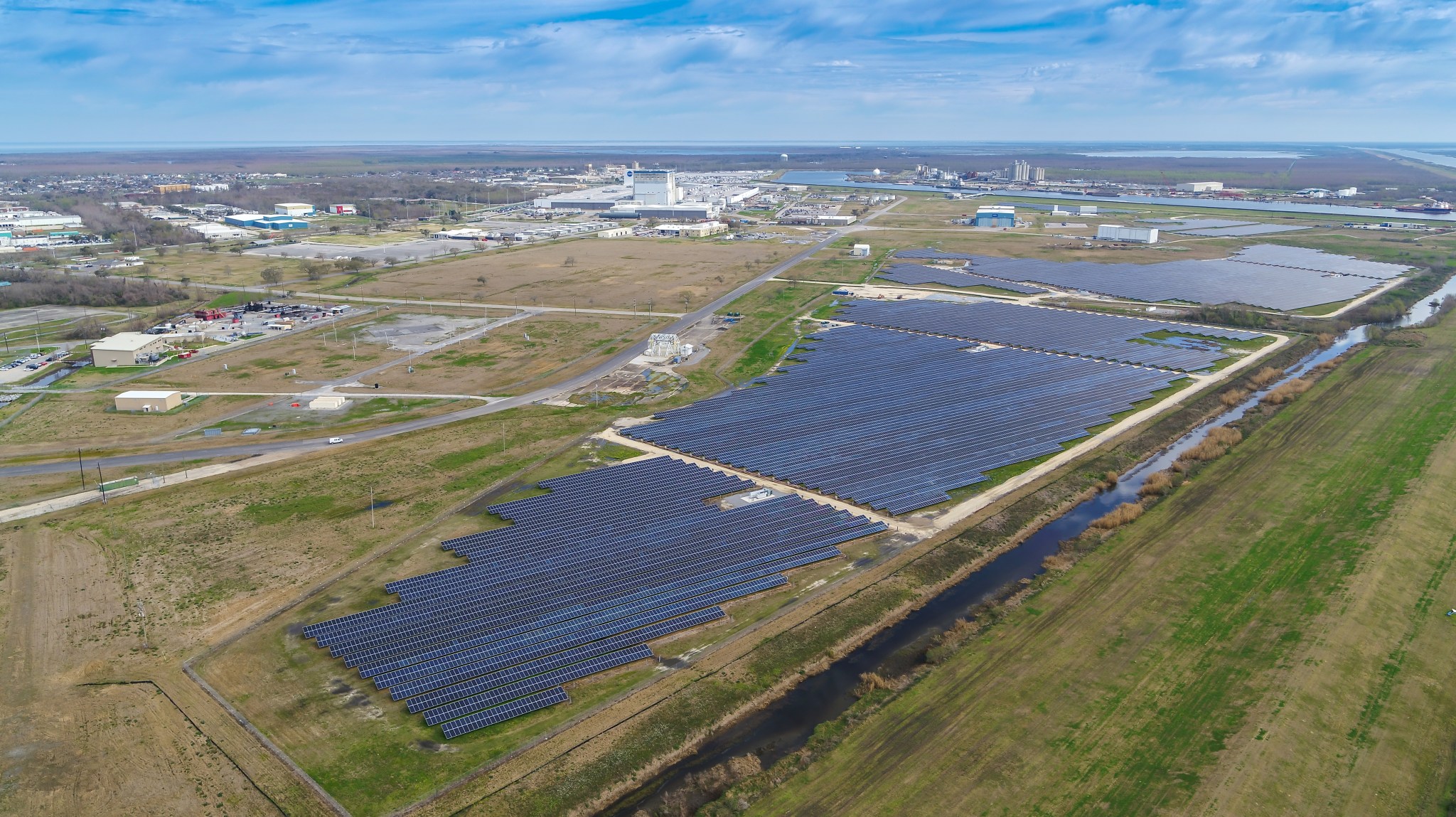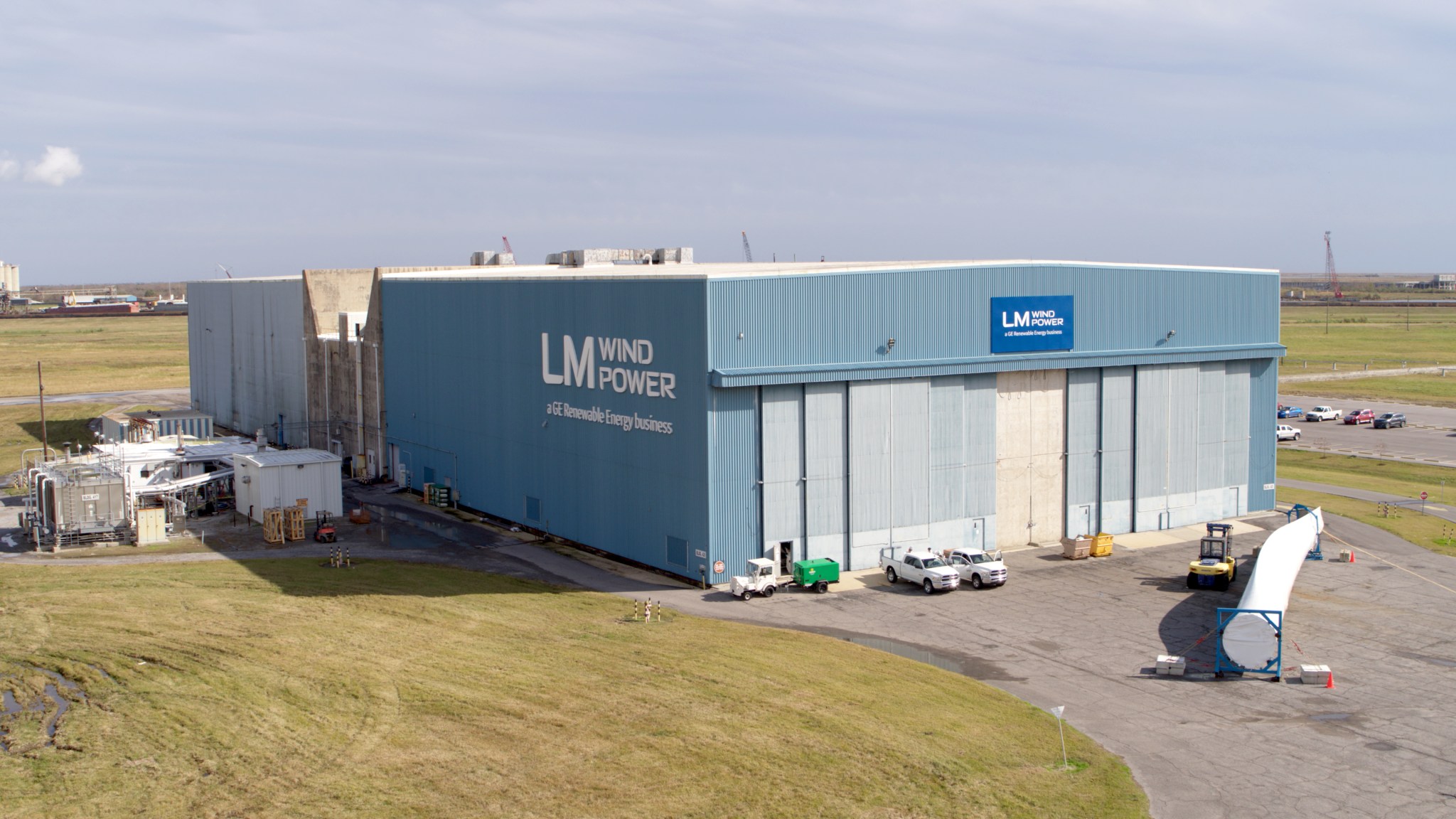NASA Continues Preparations for Artemis I Launch
NASA is continuing preparations for the Artemis I launch. Propellant loading testing during wet dress rehearsal tests identified the need for an off-site supplier to upgrade systems needed for launch. While these upgrades are underway, NASA will roll the Space Launch System rocket and Orion spacecraft back to the Vehicle Assembly Building at the agency’s Kennedy Space Center to complete critical tasks. Teams will replace a faulty check valve inside the SLS interim cryogenic propulsion stage and repair a small leak on the mobile launcher’s tail service mast umbilical. Both must be repaired before launch. The agency is reviewing schedules and options to demonstrate propellant loading operations ahead of launch. Through Artemis missions, NASA will land the first woman and the first person of color on the Moon, paving the way for a long-term lunar presence and serving as a steppingstone to send astronauts to Mars. (NASA)
Brad Solomon Named Marshall’s Chief Information Officer
Brad Solomon has been named the new chief information officer at NASA’s Marshall Space Flight Center.
Solomon will lead the delivery and operations of information technology solutions to enable NASA’s programs and mission, including its computing infrastructure, communication networks, and software systems. He will supervise a staff of 140 civil service and more than 1,000 contractor personnel while managing an annual information technology budget of more than $370 million.
He was previously manager of the Communications Services Office in Marshall’s Office of the Chief Information Officer since 2019. Solomon developed and maintained strategic and tactical roadmaps to advance all NASA enterprise communications services in line with the office’s goals and objectives.
Solomon was the Communication Services Office acting manager from 2017-2019, and he concurrently managed mission communications for the Communications System service and corporate communications for NASA’s Goddard Space Flight Center. From 2011-2017, Solomon was deputy manager for the NASA Communications Service Office and was responsible for oversight and management of NASA’s agencywide corporate communications services, leading the transformation from center to enterprise service management. From 2008-2011, he was chair of the Source Evaluation Board and lead of the Procurement Development Team that awarded the NASA Integrated Communications Services Acquisition contract.
Solomon spent 2002-2008 working with NASA’s Integrated Enterprise Management Program at Marshall. He was manager of the Human Capital Information Environment (2006-2008), manager of the Contract Management Module Program (2005-2006), manager of the Agency Labor Distribution System Program (2004-2005), deputy manager of the ePayroll Project (also 2004-2005), and he provided deployment support for the Integration Financial Management Program (2002-2003).
Solomon was a Space Flight Awareness Launch Honoree for STS-135, the final mission of Space Shuttle Program. A native of Dublin, Georgia, he earned a bachelor’s degree in electrical engineering from Auburn University in 1987, and an associate degree in engineering from Middle Georgia College in 1984. He has also completed the Federal Acquisition Certification for Program and Project Managers program
Solomon resides in Madison with his wife, Sheryl. They have two children.
John Cannaday Appointed Marshall Director of Procurement
John Cannaday has been named director of the Office of Procurement at NASA’s Marshall Space Flight Center.
Cannaday will oversee more than 130 civil service and contract employees and supervise work on more than 500 active contracts, grants, and cooperative agreements. He will lead planning and execution of all Marshall procurements for a range of multiprogram and institutional activities, including source selections, sole source procurements, contract negotiation and administration, construction of facilities, contract closeout and termination, and administration of small and minority business programs, contract reviews, cost analysis, and grants.
Before joining NASA, Cannaday was associate deputy assistant secretary (contracting) from 2020-2022 for the U.S. Air Force at the Pentagon in Arlington, Virginia. There, he assisted the deputy assistant secretary in managing all contract oversight and support related to the acquisition of weapons systems, logistics support, materiel, and services for the Air Force. He also oversaw the training, organization, and equipping of a workforce of some 8,000 contracting professionals who executed programs worth more than $65 billion annually. He was appointed in 2020 to the Senior Executive Service, the personnel system covering top managerial positions in federal agencies.
Over the course of his active-duty military and government civilian career, he worked at seven military departments and defense agencies, performing a broad spectrum of acquisition and contracting missions. From 2017-2020, he was deputy director of contracts, operations, and services for the U.S. Missile Defense Agency on Redstone Arsenal, where he led contracting directorate operations and services, overseeing policy, pricing, and business operations support.
From 2010-2017, he was a professor of contract management at the Defense Acquisition University-South in Huntsville, teaching fundamentals of acquisition, contract administration, contracting regulations, and program management to future contracting professionals. From 2006-2010, while completing his active military career, he was director of procurement for the U.S. Special Operations Command’s Office of Acquisition, Research, and Development at MacDill Air Force Base in Tampa, Florida. From 2004-2006, he was chief of multinational logistics and contracting for the U.S. Central Command’s Directorate of Logistics at MacDill. From 2001-2003, he commanded Air Force Space Command’s 50th Contracting Squadron in Colorado Springs, Colorado, and from 1999-2001, he commanded Defense Contract Management Agency-Korea, situated at Gimhae Air Base in Busan, South Korea. Prior to that, he held numerous key contracting positions at Air Force offices and bases in Ohio, Virginia, California, and Colorado.
Cannaday graduated from The Citadel in Charleston, South Carolina, in 1984 with a bachelor’s degree in business administration and immediately entered the Air Force. He also received a master’s degree in contract management in 1989 from The Air Force Institute of Technology at Wright-Patterson Air Force Base in Ohio, and a second master’s degree in strategic studies in 2004 from the Air War College at Maxwell Air Force Base in Montgomery, Alabama.
Cannaday lives in Huntsville with his wife, Louie, and youngest child, Eli. He also has four other children: Daniel, Patt, Nick, and Kara Drake.
NASA Builds Welding Test Article for SLS Exploration Upper Stage
NASA completes manufacturing of a hydrogen tank barrel that will be tested as a weld confidence article for the Space Launch System (SLS) rocket’s Exploration Upper Stage. Weld confidence articles help establish welding procedures and interfaces between the tooling and hardware and ensure the structural integrity of the welds. Starting with the Artemis IV mission, the Exploration Upper Stage will provide the power to send astronauts in NASA’s Orion spacecraft and heavy cargo on a precise trajectory to the Moon. After NASA and lead contractor Boeing completed manufacturing of the test tank barrel at NASA’s Michoud Assembly Facility, technicians moved it from the Vertical Weld Center where it was built to the Vertical Assembly Center for further processing. Engineers will cut the barrel into small sections for mechanical testing and analysis that will help verify the parameters that will be used to build the rocket stage. For NASA’s first three Artemis missions, the SLS rocket will use an interim cryogenic propulsion stage with one RL10 engine to send Orion to the Moon. The Exploration Upper Stage will be used on the rocket’s Block IB evolved configuration for flights beyond Artemis III. The upper stage has larger propellant tanks and four RL10 engines. The evolution of the rocket to SLS Block 1B configuration with the Exploration Upper Stage enables SLS to launch 40% more cargo to the Moon along with the crew. SLS is the only rocket that can send Orion, astronauts, and heavy cargos to the Moon in a single mission. The SLS rocket, Orion, Gateway, and commercial human landing systems are part of NASA’s backbone for deep space exploration. (NASA)
NASA Student Launch Teams Returning to North Alabama
By Daniel Boyette
Following two years of virtual events, teams will have the opportunity to compete in person at the 2022 NASA Student Launch rocketry competition.
The annual event is set for April 23 at Bragg Farms in Toney, Alabama, minutes north of NASA’s Marshall Space Flight Center. Student Launch challenges middle school, high school, college, and university students to design, build, test, and fly a payload and high-powered amateur rocket. Sixty teams from 23 states plus Puerto Rico are taking part in this year’s competition; 27 teams are expected to launch in person. Teams not traveling to Alabama may conduct final test flights at a home launch field.
Launch day will run from 9:30 a.m. to 2:30 p.m. CDT, or until the last rocket launches. The opening ceremony begins at 9 a.m., featuring speakers from NASA Headquarters, NASA Marshall, and Northrop Grumman. April 24 will be the tentative rain day in case of deterring weather. Competition will run from 9 a.m. to 2:30 p.m., or until last rocket launches.
Winners will be announced June 2 during a virtual awards ceremony once all teams’ flight data has been verified.
This year, teams must fly their rocket to an altitude between 4,000 and 6,000 feet and make a successful landing. Teams in the college/university division will tackle a new task that mirrors NASA missions like the Mars Curiosity Rover. Teams must design a payload capable of autonomously locating where their rocket landed by identifying the rocket’s grid position on an aerial image of the launch site, while transmitting the data back to their ground station. This must be accomplished without the use of GPS. The requirement simulates a challenge faced by NASA mission managers – communicating with spacecraft and payloads on distant planetary bodies, where use of GPS is not an option.
Middle and high school teams can choose to attempt the college/university division challenge or develop their own science or engineering experiment.
Teams predicted their rocket’s altitude months in advance of launch day. The team that comes closest to their projection in each division wins the Altitude Award. Teams are scored in nearly a dozen other categories, including safety, vehicle design, social media presence, and science, technology, engineering, and math engagement.
NASA’s Southeast Regional Office of STEM Engagement manages Student Launch, one of the agency’s Artemis Student Challenges. These activities stimulate innovation and advance NASA’s human exploration mission through collaboration with educational institutions and students – the Artemis Generation, who will help NASA explore the Moon and Mars. NASA’s Space Operations Mission Directorate and Office of STEM Engagement, along with Northrop Grumman provide funding and leadership for the initiative.
The rocket launches are open to the public, but pets are not permitted.
Live streaming will begin at 8:30 a.m. CDT on Student Launch Facebook and Marshall YouTube.
Boyette, an LSINC employee and the Marshall Star editor, supports Marshall’s Office of Strategic Analysis & Communications.
Marshall Sets Sights on Single-Use Plastics for Earth Day 2022
By Tee Quillin
What exactly are single-use plastics? It’s easiest to think of them as the plastic water bottles found in convenience stores and the waiting rooms of upscale office buildings. We crack open the bottle, drink down the contents, loudly crush it into a wad, throw it into a trash can, and never think about it again. But that’s the problem: It’s a case of “out of sight, out of mind” for consumers.
According to the Natural Resources Defense Council, humans produce approximately 330 million tons of plastic each year, half of which is single-use. And 91% of all plastic isn’t recycled at all, which means it ends up in landfills or in the environment.
Considering how much “disposable” plastic we use daily – not just water bottles, but drinking straws, plastic shopping bags, candy wrappers, and many other places they’re used which aren’t so obvious – it’s easy to see how that number quickly adds up.
So, what can be done about it?
The answers to that question are the focus of this year’s Earth Day theme at NASA’s Marshall Space Flight Center: “Kick the Habit – Reduce Single-use Plastics.”
“We are excited about this year’s theme. In accordance with Executive Order 14057, we are using this Earth Day event to ‘develop a climate and sustainability focused workforce,’” said Malene Mcelroy, Marshall sustainability coordinator. “We want to encourage the Marshall team to look for ways to reduce single-use plastics whether working on-site or from home. We will continue this theme during our annual Plastic Free July and America Recycles Day events.”
There will be two “Lunch ‘n Learn” events which will take place on April 21. At 11 a.m., Dr. Jason Bara of the University of Alabama and Dr. Virginia Davis of Auburn University will discuss their end-of-life plastics projects, then at 12 p.m., the Tennessee Valley Authority will discuss their electric vehicle program. There will be opportunities for questions from the audience during both meetings.
The winner will also be announced of Marshall’s “4 R’s” photo competition. Team members were encouraged to submit a photo of the most creative example or expression of one of the four R’s: Refuse to use single use plastics by using reusable shopping bags, water bottles, and straws; Reduce the amount of single use plastics used; Reuse-avoid purchasing new items if possible; and Recycle instead of sending them to the landfill.
Other events and products include a virtual electric vehicle show, a sustainable building tour, and a sustainability video. There are also special eco-friendly items available at the Marshall Exchange Space Shop.
President Joe Biden signed Executive Order 14507, “Catalyzing Clean Energy Industries and Jobs Through Federal Sustainability,” in December 2021, which directs the federal government to use its scale and procurement power to lead by example in tackling the climate crisis. The order aims to reduce emissions across federal operations, invest in American clean energy industries and manufacturing, and create clean, healthy, and resilient communities.
For more on Marshall’s Earth Day celebration, visit here.
Quillin, a Media Fusion employee, supports Marshall’s Office of Strategic Analysis & Communications.
Michoud Enables Green Energy Development for Community
By Matt Higgins
NASA’s Michoud Assembly Facility is doing its part to “Invest in Our Planet,” the official slogan of Earth Day 2022, as a host site for solar and wind power facilities.
Entergy New Orleans, the electric and gas utility for the city, completed its New Orleans Solar Station in December 2020 and resides on approximately 100 acres at Michoud. The solar station is a 20-megawatt power plant and consists of over 70,500 solar modules. It will combine with two other solar plants under development in neighboring parishes to account for 10% of power to Entergy’s customers, a step toward meeting the city of New Orleans’ mandate that renewable energy account for 90% of the company’s output by 2040.
LM Wind Power, part of GE Renewable Energy, resides on 80,000 square feet at Michoud. The company provides wind turbine blades and services to GE Renewable Energy Onshore and Offshore and to the greater wind industry. LM Wind Power’s presence at Michoud is mutually beneficial for both parties. Michoud leases space that allows for the company’s research and development facility and provides the logistical support LM Wind Power needs.
“The proximity of this facility to sea makes it much easier for transportation by sea rather than by road,” a company spokesperson said. “The availability of educated, trained, and experienced engineers and technicians locally helps.”
In 2018, LM Wind Power expanded its presence at Michoud to include the Technology Center Americas to address its customers’ engineering needs. LM Wind Power’s expansion is in response to the growing wind power market. The American Wind Energy Association estimates the pipeline of wind farms under construction or in advanced development increased 40% in megawatt capacity from 2017 to 2018.
Hosting renewables facilities is a sustainable partnership for NASA. The agency’s Extended Use Lease agreements for underdeveloped land/green space at Michoud allow for the leasing of space to private entities like solar and wind companies.
“Michoud’s partnerships with Entergy Solar and LM Wind Power offsets our operating Space Launch System costs, and their presence contributes to our facility’s green initiative,” Michoud Director Lonnie Dutreix said.
Earth Day 2022 comes on the heels of a United Nations report on climate change that provided a startling warning: “It’s now or never” to limit global warming to 2.7 degrees Fahrenheit. The report noted though, that capacity to address the problem exists. The Biden Administration has tasked NASA with using its unique capabilities to assist in the efforts to reduce global warming.
NASA’s Climate Action Plan calls for the agency to integrate climate data in its risk analysis and resiliency planning to protect the agency from adverse impacts from climate change. Approximately two-thirds of NASA assets when measured by replacement value are located within 16 feet of mean sea level along America’s coasts.
Michoud is one of those NASA assets threatened by rising sea levels. Its location on the Intracoastal Waterway makes it an ideal location to transport space flight vehicles to other NASA facilities; but its location also means Michoud can’t ignore the threat of rising sea levels. Michoud’s levee protection system protected the facility during Hurricane Katrina, even as 80% of New Orleans flooded. Michoud added insurance plans to protect its infrastructure. The Army Corps of Engineers raised the levees at the facility, and NASA installed an additional four water pumping stations to safeguard the facility.
An increase in global temperatures is causing more extreme weather events. There were a record 30 named storms during the 2020 Atlantic hurricane season. That included 14 hurricanes, seven of them major, and 11 named storms hitting the U.S. coastline. 2021 was the third most active year on record in terms of named storms, marking the sixth consecutive above-normal Atlantic hurricane season. The Intergovernmental Panel on Climate Change’s Sixth Assessment Report, released in August 2021, projects with high confidence an increase in tropical cyclones that reach very intense (category 4-5) levels as the Earth gets warmer.
The growing renewable energy market, including wind and solar, can assist nations meet the 2015 Paris Agreement’s benchmark of a rise in global temperatures of no more than 2.7 degrees Fahrenheit.
NASA will be at the forefront in the battle to keep Earth’s global temperature mean from rising beyond catastrophic levels with its ability to provide climate data, its abundant engineering capabilities, its partnerships with private entities, and its history of innovation. NASA facilities like Michoud have already laid the groundwork for a greener future.
Higgins, a Manufacturing Technical Solutions employee, supports Marshall’s Office of Strategic Analysis & Communications.
Lucy Obtains New Calibration Images, Highlighted on ‘This Week at NASA’
The latest calibration images from NASA’s Lucy spacecraft are featured in “This Week @NASA,” a weekly video program broadcast on NASA-TV and posted online.
Lucy obtained the new images with its four visible-light cameras Feb. 14. While the first test images were taken shortly after launch, the February tests were much more extensive. Using its Instrument Pointing Platform, Lucy pointed at 11 star fields to test camera performance and sensitivity, as well as the spacecraft’s ability to point accurately in different directions. Lucy, which launched in October 2021, is the first space mission set to explore a diverse population of small bodies known as the Trojan asteroids.
Lucy is a project of the Science Mission Directorate’s Discovery Program, managed by the Planetary Missions Program Office at NASA’s Marshall Space Flight Center.
View this and previous episodes at “This Week @NASA” on NASA’s YouTube page.



























